Delonix regia
It is going to be very hot from now until October, so make sure that you have plenty of shade in which to shelter from the sun. Not all trees are suitable however with some having frondy leaves. You will see that many villagers have a vine under which they can eat and talk at any time of the day or evening. Vines are often supported by a scaffolding pole structure, due to the weight of a vine in full leaf and later laden with ripening grapes. Some gardens have a leafy pergola and whilst they filter the hot air which helps the tree, they can also let some sunlight through onto you!
I am always being asked which small trees do best in our gardens during the summer months. A lot depends on where you live of course, but I think that my favourite has to be Caesalpinia gilliesii. It is a pretty drought-tolerant tree and the racemes of stunning five-petalled yellow flowers, with ten very long bright-red stamens that dance in any summer breeze, deserve centre stage.
Originally from tropical America, it enjoys our summer too and even came through the dreaded frost we had that decimated a lot of plants here. Pruning back the branches after flowering helps to generate the blooms for next season, as they appear on new wood. It makes large seed pods and when they are ripe, they burst open scattering the large seeds everywhere which germinate easily.
Duranta erecta, originally discovered growing in Florida, Brazil and the Caribbean Islands, is a large sub-tropical shrub or small tree, ideal for many gardens. The arching stems carry trails of sky-blue flowers on their tips attracting many butterflies and there is a bonus of a delightful fragrance. The flowers mature into little strings of orange berries just like beads, greatly loved by pigeons and other birds.
Tecoma stans thrusts skywards along the coastline but grows equally well at higher elevations, showing off its brilliant yellow flowers amongst bright-green leaves.A native of tropical America, it grows extremely well in other parts of the island too and is widely used along the coastal roads here.
Bougainvillea will be shouting at you from the treetops or railings with its bracts of many colours, as it scrambles up supports and trees. I have seen this attractive climber growing in many parts of the world and it is always on my favourite list, even though it sheds its bracts constantly. These bracts shelter the tiny white flower inside.
Beware though, these eye-catching climbers do need something to hold on to. In the wild they used other tall trees to do just that, but in your garden, you need to provide some support and watch out for those nasty thorns along the branches and stems, especially when you are pruning and yes, you will have to do that as growth can be fast.
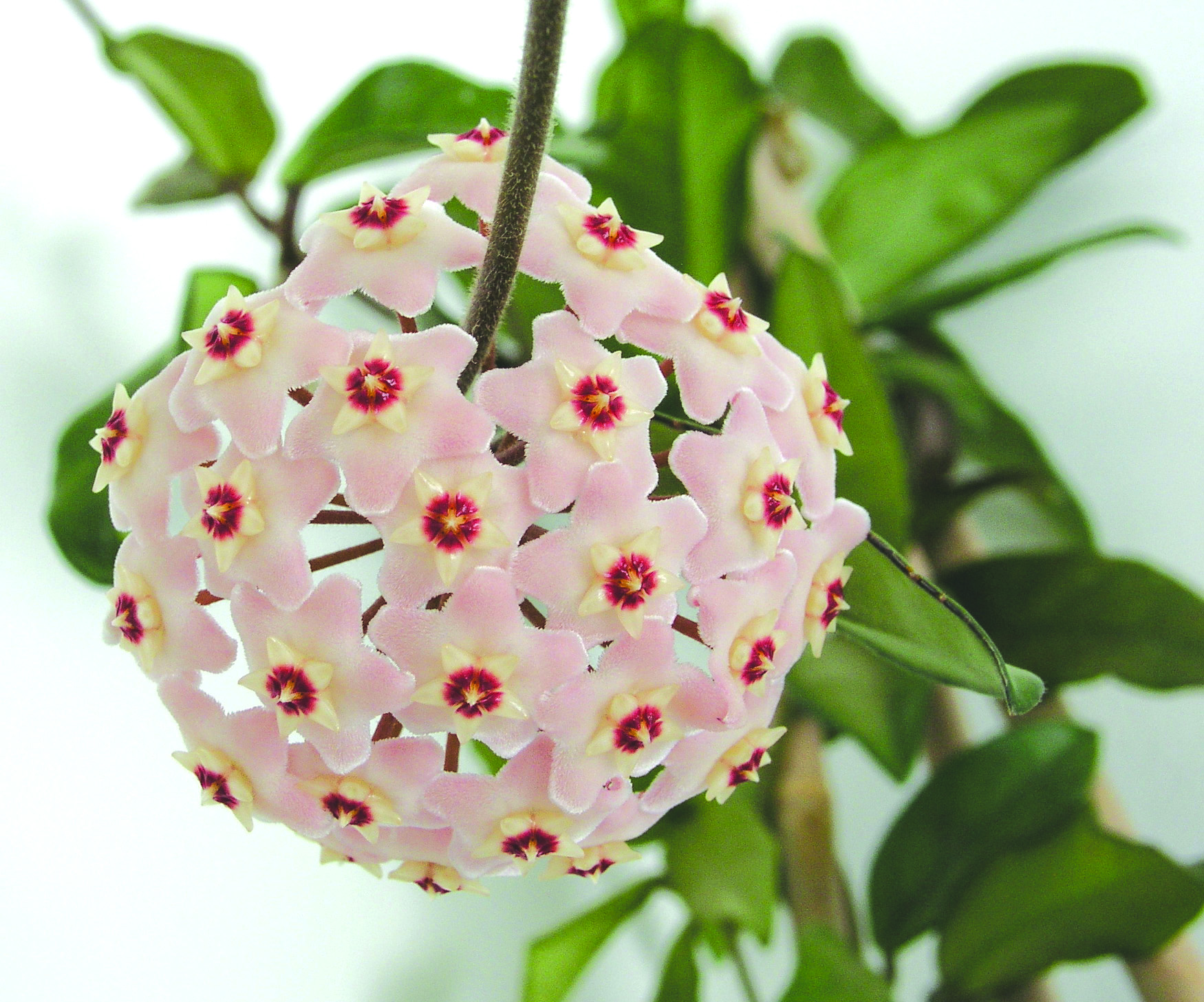
Campsis radicans is a rampant grower too, so be careful where you plant it, as it is heavy and likely to bring down any supports if they are not secure.
A more gentle climber is Hoya carnosa. This lovely native of Eastern Asia and Australia, will grow outdoors very successfully as long as it has some shade from the midday sun and it does equally well in a pot. It’s a splendid plant for a veranda or conservatory.
The extremely pretty pink star-shaped flowers, attractive to bees and butterflies, appear on leafless spurs. When the flowers die, it is important not to cut off these spurs, as new flowers will appear in the same place next season.
A favourite in many gardens is Jasminum officinale. It is not exactly a climber but a draper – where the long stems tend to hang down from a support, a metal umbrella shape perhaps and the beautifully scented flowers white tinged with pink exude their perfume everywhere.
‘High summer’ here brings out the amazing flowers on tropical and semi-tropical trees. If you live along the coastline then you will be able to enjoy Delonix regia or the Flame Tree, as it is commonly known, when the branches thrust skywards with masses of flaming orange flowers, which contrast so well with the brilliant blue skies.
In the coastal towns you will also see the occasional frangipane, which loves humidity and is a favourite of mine, although sadly I can’t grow it here at 300 metres. You may not want to grow them in your garden either, as these are very tall trees growing to well over 9 metres and also need some space for sideways growth.
At ground level, the flower garden may need lots of attention too. Dead heading and seed collecting of those special early favourites like cerinthe and sweet peas, although the latter may have finished flowering some time ago.
Watch out for the really tiny pea moth caterpillars amongst the seeds in the sweet pea pods when opening them. I always recommend saving seeds in old envelopes as plastic bags can cause sweat and spoil the seeds.
Of course, at this time of year watering is a daily chore. Whilst you can use ‘grey’ water for flowering plants which also helps to keep the bugs off, do not use it for anything you are going to eat.
Pelargoniums, those popular pot plants from South Africa just love it all, provided they are watered regularly and fed occasionally with Phostrogen. Do this in the cool of the day or first thing in the morning making sure that the water goes straight to the soil and not on the leaves or petals.
Some of the little succulent plants like portaluca do well especially at this time of year and have small multi-coloured flowers which will delight you.
Even though it is hot, it is still possible to grow some salad crops if you have a shady spot in the garden or even on a veranda, if you live in an apartment. Garden centres still have lots of plugs making a quick start to harvesting your crops and what is better than picking your own from a pot or garden.
Herbs, too, are very useful plants to have around, as many have leaves full of oils, which when are exuded during the day or night may put off unfriendly insects and therefore, they avoid these plants.
Melons, courgettes and cucumbers will be growing at a fast pace and the sweet tomatoes to accompany them will need some daily watering. I always advise sinking a plant pot next to a tomato plant and putting the water/feed into that so that it reaches directly down to the roots. If they are not watered every day or so they may split.
I love to grow sweet corn too. Usually planted around the end of April from plugs, it is fun to watch them rapidly grow. Sweet corn plants are wind pollinated so should be planted close together so that the pollen reaches into the ‘flowers’.
Remember to do any necessary work after the sun is off your garden. It is tempting to plant and work in the early morning when everything is bright and rested, but any new plants will have to endure the heat of the day.
Bugs like Mediterranean fruit flies may still be around especially if there are any ripe citrus fruits still on the trees – best to collect the fruits and juice them for summer drinks. Ripening prunus fruits like apricots, nectarines and peaches are also liable to attract these flies, as are figs, which are looking luscious now. They are also well liked by birds, so you may have to harvest them as they quickly ripen.
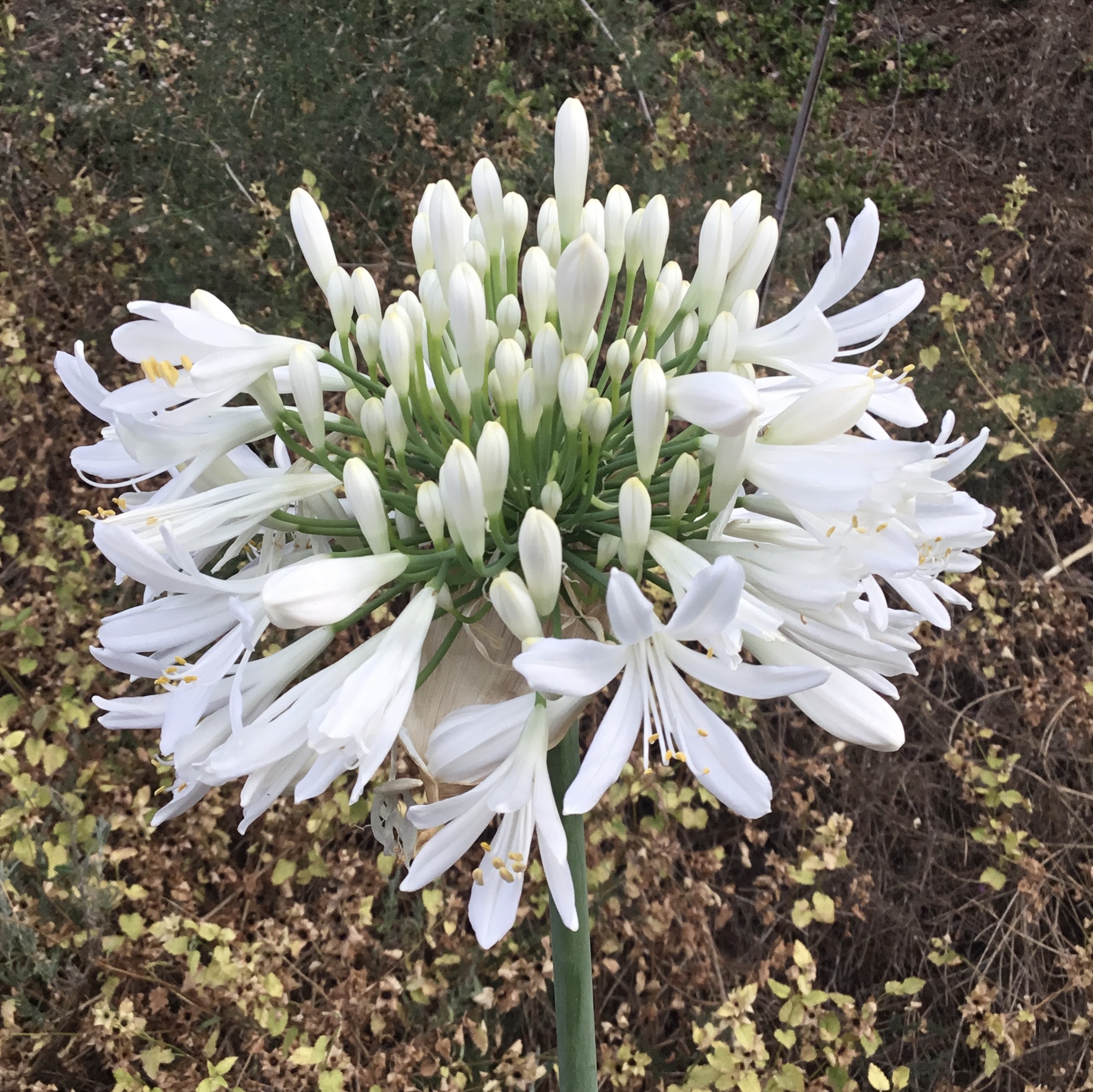
Plant of the Month – Agapanthus
Agapanthus, another plant hailing from South Africa, is one plant that likes sunshine. The common name is ‘African lily’ or ‘lily of the Nile’, so we can assume that it enjoys any hot sunny weather. The more sun, the better the flowering, so don’t grow these drought-tolerant plants in the shade.
You either love agapanthus or you hate it, probably because it refuses to flower for you! Now why is that I wonder? The answer is not to grow these plants in the shade. There is a common fallacy that the more they are crowded together in a pot or in the ground, the more flowers they will have.
They grow just as well in tubs as in the ground as long as they are not drowned by watering, when the leaves may turn yellow. On the other hand, hot sun could burn the fleshy leaves, so give the plant a modicum of shade when it is extremely hot if you can.
The lovely blue or white flowers can have 50 or more umbels on each flower stalk. Eventually you may have to split up the plants, but that will give you lots more clumps of these lovely flowers.

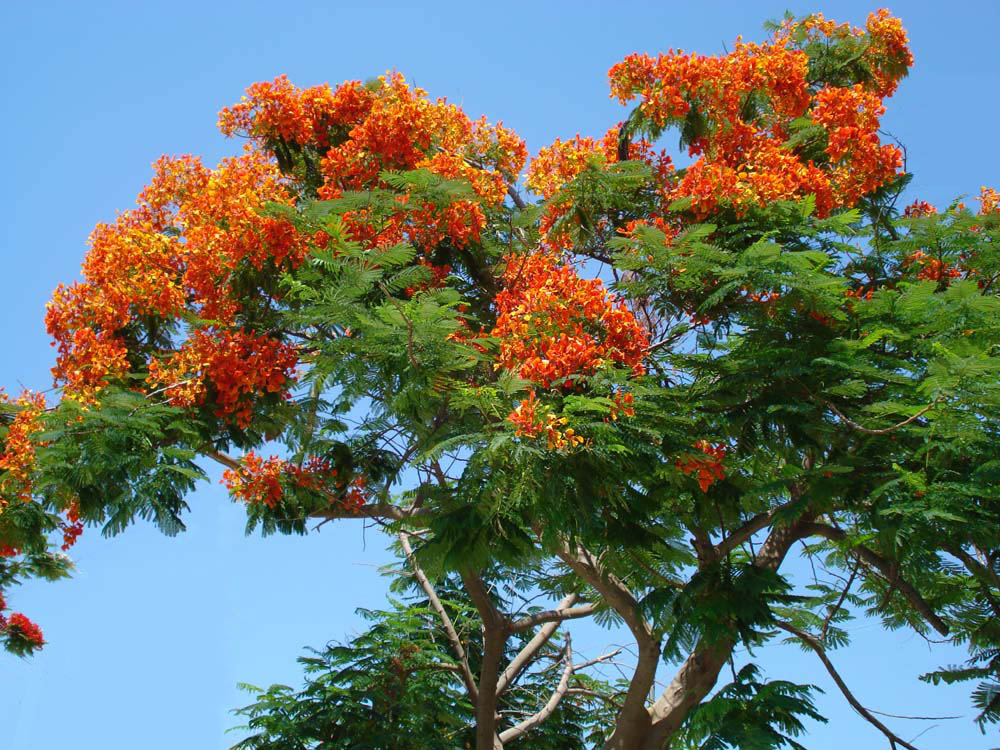
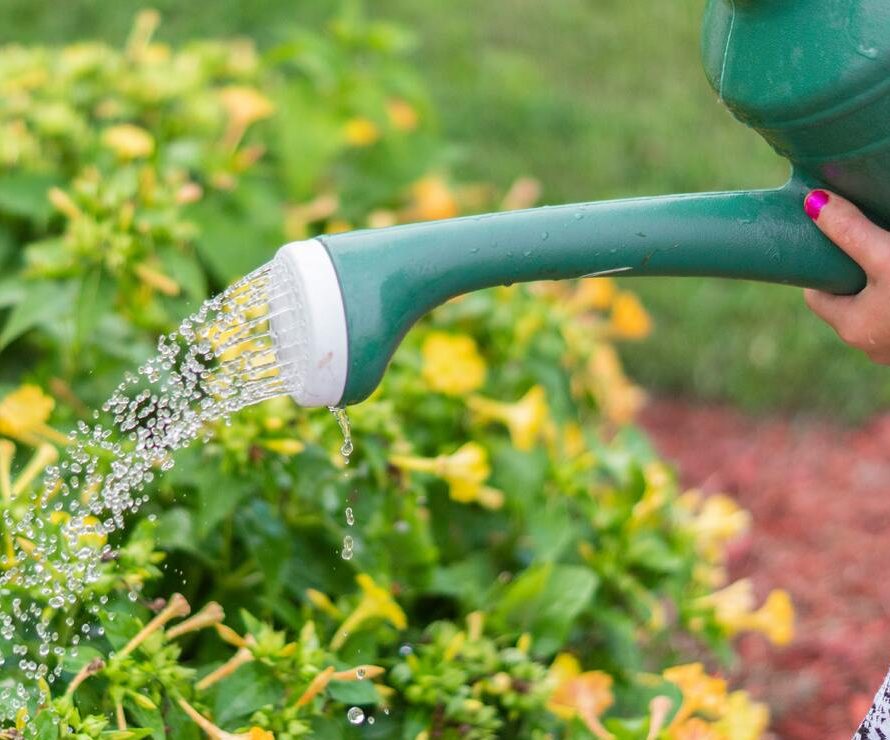
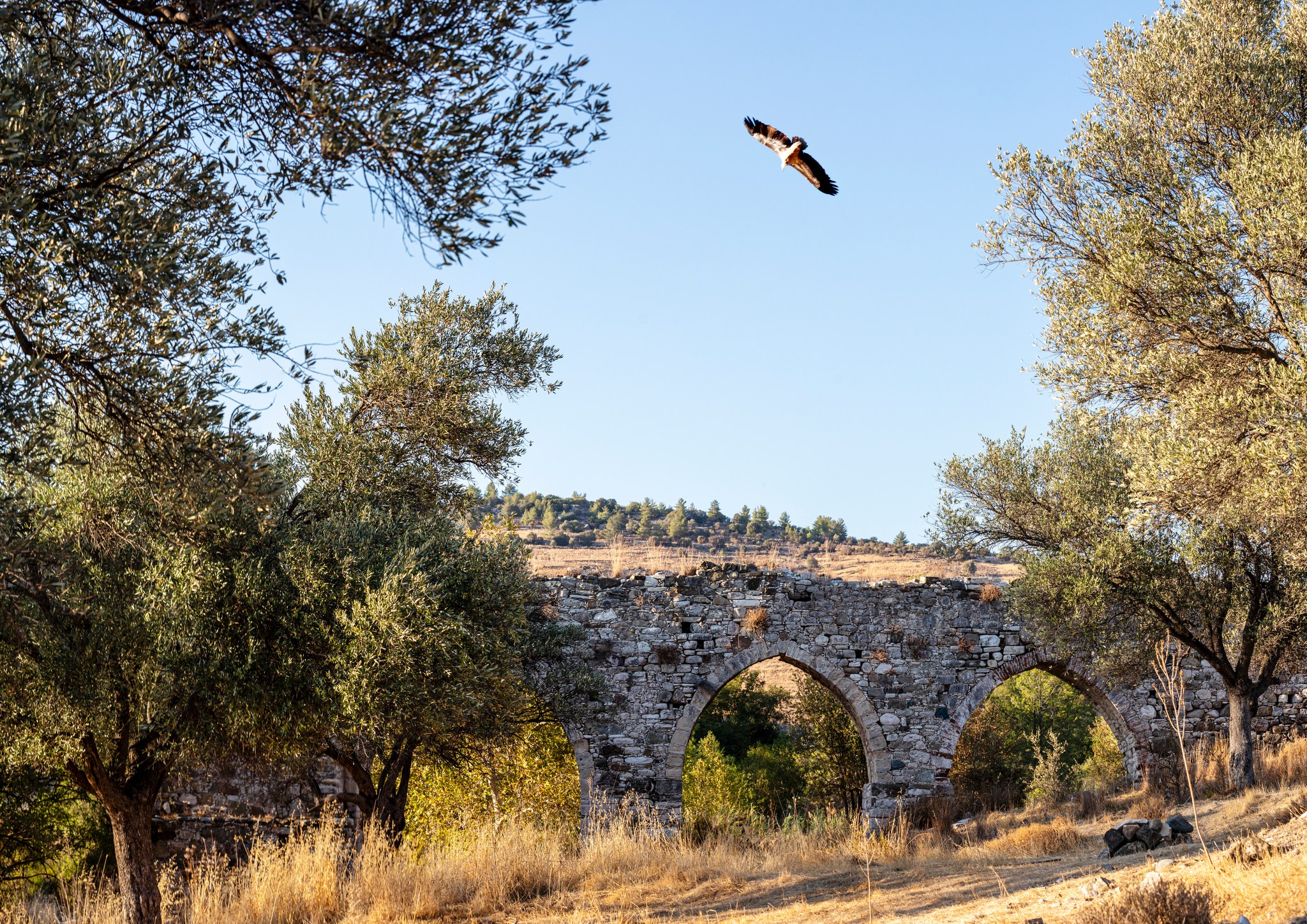



Click here to change your cookie preferences